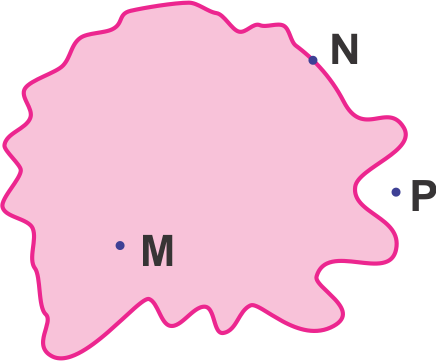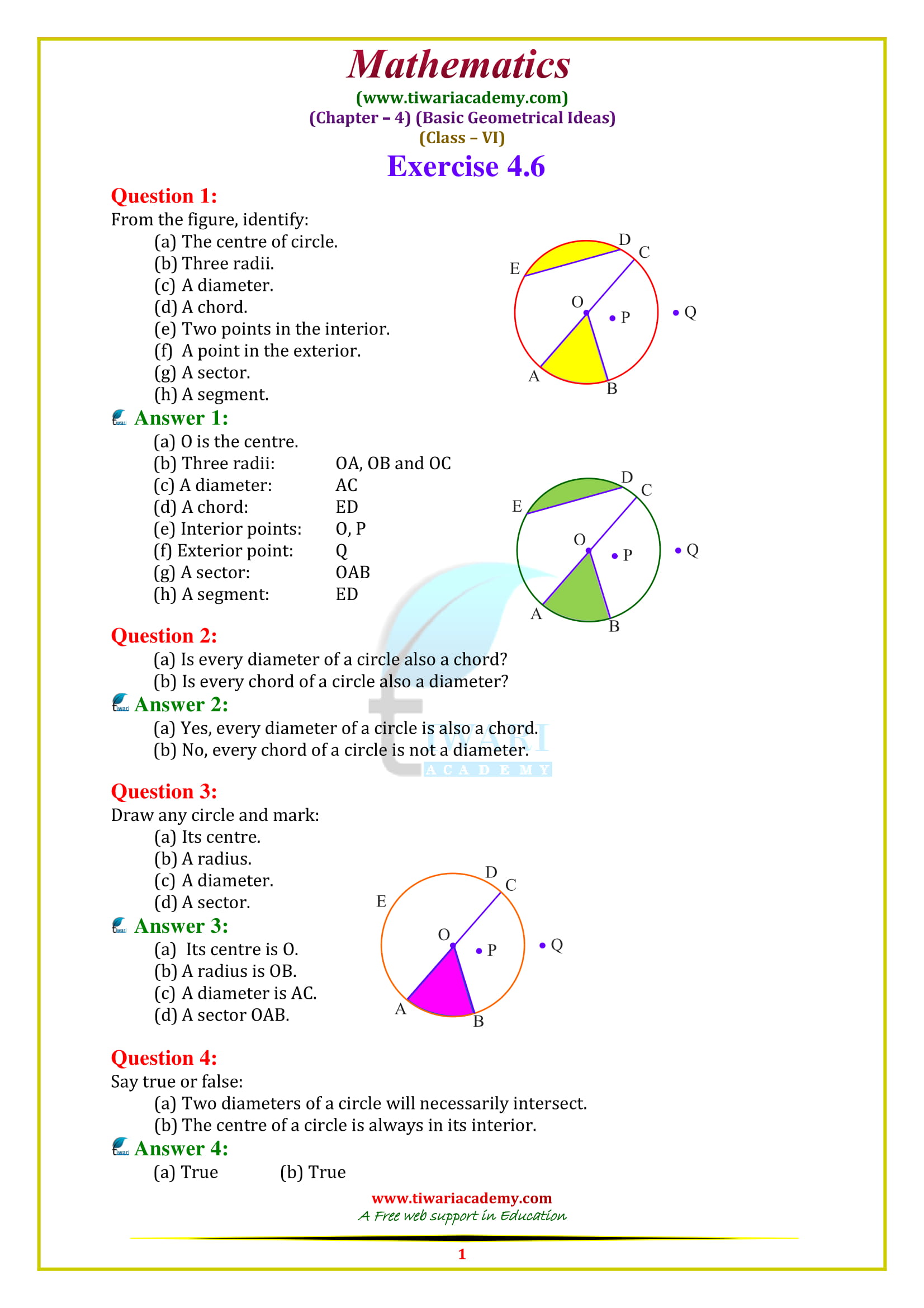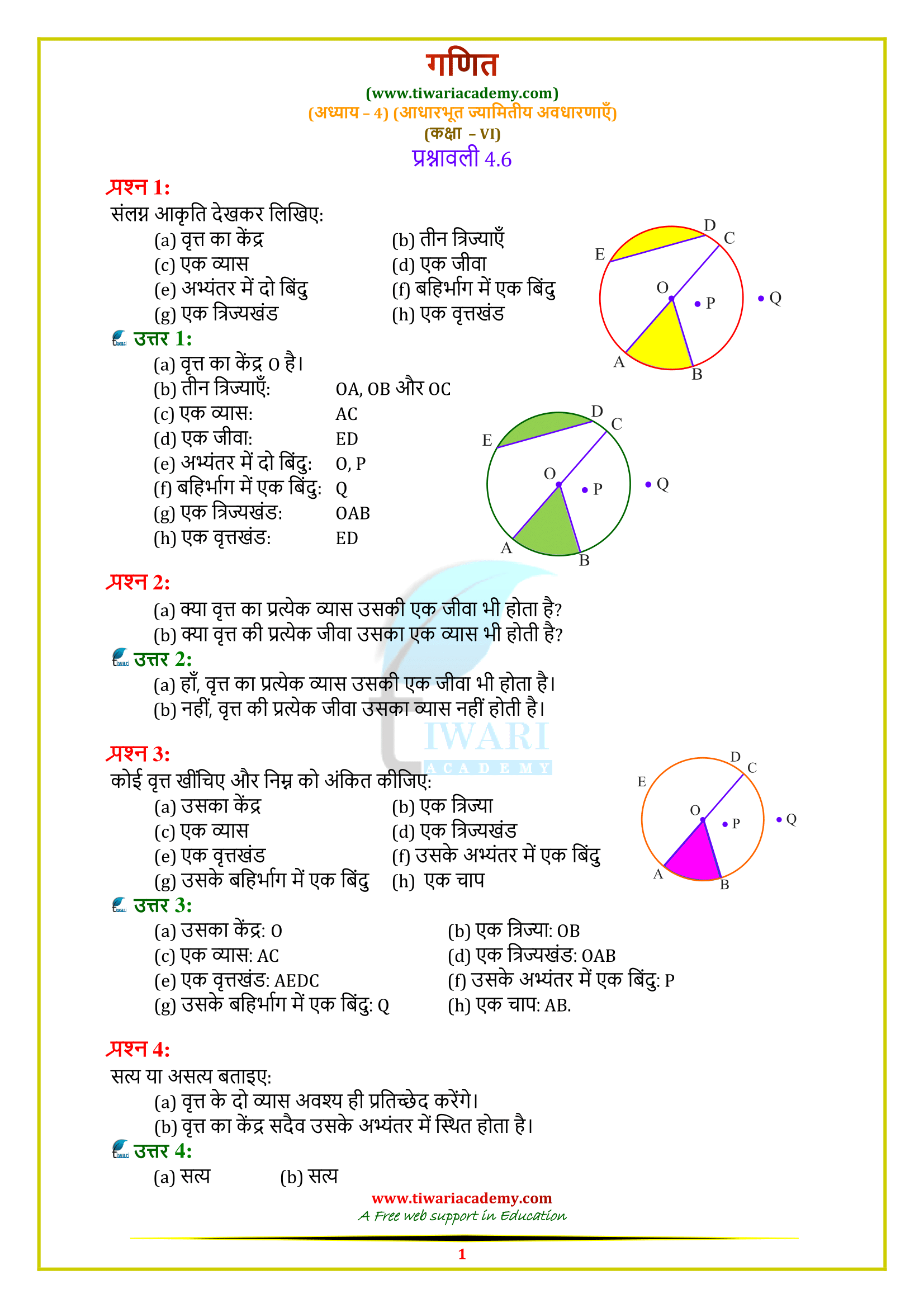CBSE NCERT Solutions for Class 6 Maths Chapter 4 Exercise 4.6 on Basic Geometrical Ideas in Hindi and English Medium updated for new session 2025-26. Access simplified Class 6 Maths NCERT solutions for Chapter 4 Exercise 4.6 on Geometry at Tiwari Academy, in both Hindi and English – ideal for CBSE and state board students.
6th Maths Exercise 4.6 Solution in Hindi and English Medium
Class 6 Maths Chapter 4 Exercise 4.6 Solution
Class VI Mathematics NCERT book Ex. 4.6 of Basic Geometrical Ideas free to use online or download in PDF file format. Download the NCERT videos solution containing the explanation of each question of exercise 4.6 class 6 Maths. There is no need to login or registered to use Tiwari Academy contents. Feel free to contact us if have any problem using these contents and solutions.
| Class: 6 | Mathematics |
| Chapter: 4 | Exercise: 4.6 |
| Chapter Name: | Basic Geometrical Ideas |
| Content Type: | NCERT Exercise Questions |
| Medium: | Hindi and English Mediun |
Curves
The word ‘curve’ means ‘not straight’. However, in Mathematics a curve can be straight.
Types of Curves
There are two types of curves:
- Open curves
- Closed curves.
Open Curves
A curve which does not cut itself is called an open curve.
Closed Curves
A curve which cuts itself is called a closed curve.
Position of a Point with Respect to a Curve
If a closed curve is drawn on the plane of the paper, then it divides the plane into three disjoint parts:
- The points lying inside the curve or interior of the curve.
- The points lying on the curve or the boundary of the curve.
- The points lying outside the curve or the exterior of the curve. The interior of a curve together with its boundary is called its “region”.

Polygons
A closed curve formed by the line segments is called a polygon if:
- (i) no two line segments intersect except at their end-points.
- (ii) no two line segments with a common end points are coincident.
Sides, Vertices and Diagonals of a Polygon
Sides
The line segments forming a polygon are called its sides.
Vertices
The end-points of the line segments are called its vertices. In other words, the meeting point of a pair of sides is called a vertex of the polygon.
Diagonals
The line segments obtained by joining the vertices which are not adjacent are called the diagonals of the polygon.
Note: The end-points of the same side of a polygon are known as adjacent vertices.
ABC is a polygon having three sides AB, BC and CA. Points A, B, C are called vertices.
The figure consists of three sides. So, it is called a triangle.
Class 6 Maths Exercise 4.6 Important Extra Questions
What do you mean by curve? give some examples
A curve is a shape or a line which is smoothly drawn in a plane having a bent or turns in it. For example, a circle, parabola, hyperbola or a zig-zag shape are examples of curved-shape.
How are polygons used in real life?
Real-life applications of polygons
The tiles which you on walk are squared in shaped, which implies that, they are polygons. The truss of a building or bridge, the walls of a building etc. are examples of polygons. Trusses are triangular in shape while walls are rectangular shaped.
What characteristics do polygons have?
(i) A polygon can be regular or irregular.
(ii) A regular polygon has all sides of equal length, and all angles of equal size.
(iii) An irregular polygon has sides of different lengths and angles of different sizes.
What’s a 7 sided shape called?
A five-sided shape is called a pentagon. A six-sided shape is a hexagon, a seven-sided shape a heptagon, while an octagon has eight sides… The names of polygons are derived from the prefixes of ancient Greek numbers.
The polygon with four sides PQ, QR, RS and SP. It has four vertices P, Q, R and S. Such a figure is called a quadrilateral. Line segments PR and SQ are known as the diagonals.
A closed figure formed by five line segments is known as a pentagon. A pentagon with KL, LM, MN, NP and PK as five sides. K, L, M, N and P are five vertices of the pentagon. Line segments KM, KN, LN, LP etc. are diagonals.
How many sums are there in exercise 4.6 of class 6th Maths?
In exercise 4.6 of class 6th Maths, there are four questions and no example. From this exercise, short answer type questions like true or false, yes or no, MCQ, fill in the blanks, one-word answers will come in the exam. Basically, 1 mark or 2 marks questions will come from this exercise.
Which questions of exercise 4.6 of class 6 Maths are important and may come in the exam?
There are four questions in exercise 4.6 of class 6 Maths. All questions of this exercise are important for the exam. But the most important questions that have more chance to come in the exams are questions 2 and 3.
Can students complete exercise 4.6 of class 6th Maths within 2 hours?
Students can complete exercise 4.6 of class 6th Maths within 2 hours or not depends on student’s working speed, efficiency, capability, and many other factors. But if they try to complete exercise 4.6 of class 6th Maths within 2 hours, they can easily do that.
Is exercise 4.6 (chapter 4) of class 6th Maths easy?
Exercise 4.6 (chapter 4 Basic geometrical ideas) of class 6th Maths is very easy. All questions of this exercise are straightforward. But difficulty level of any topic varies from student to student. So, Exercise 4.6 (chapter 4 Basic geometrical ideas) of class 6th Maths is easy or not depends on students also. Some students find it complex, and some find it simple.
What will students study in exercise 4.6 of class 6th Maths?
In exercise 4.6 of class 6th Maths, students will study all about circles. Students will enjoy doing this exercise.





